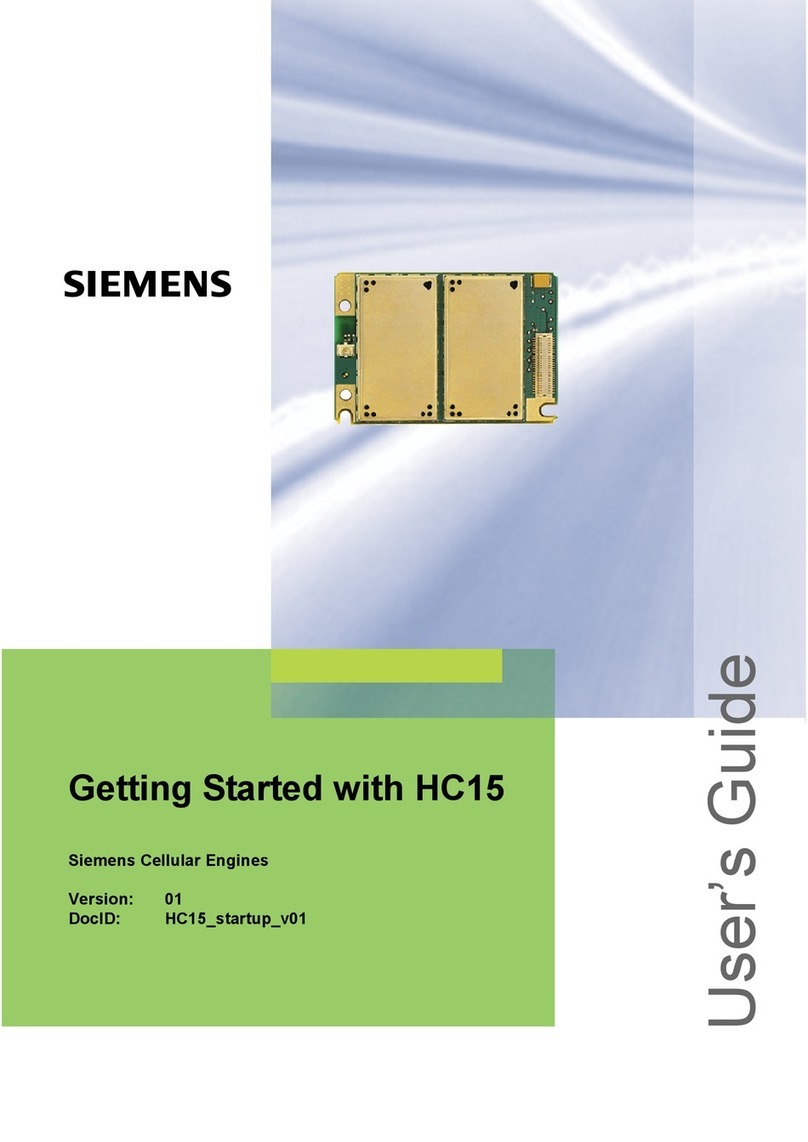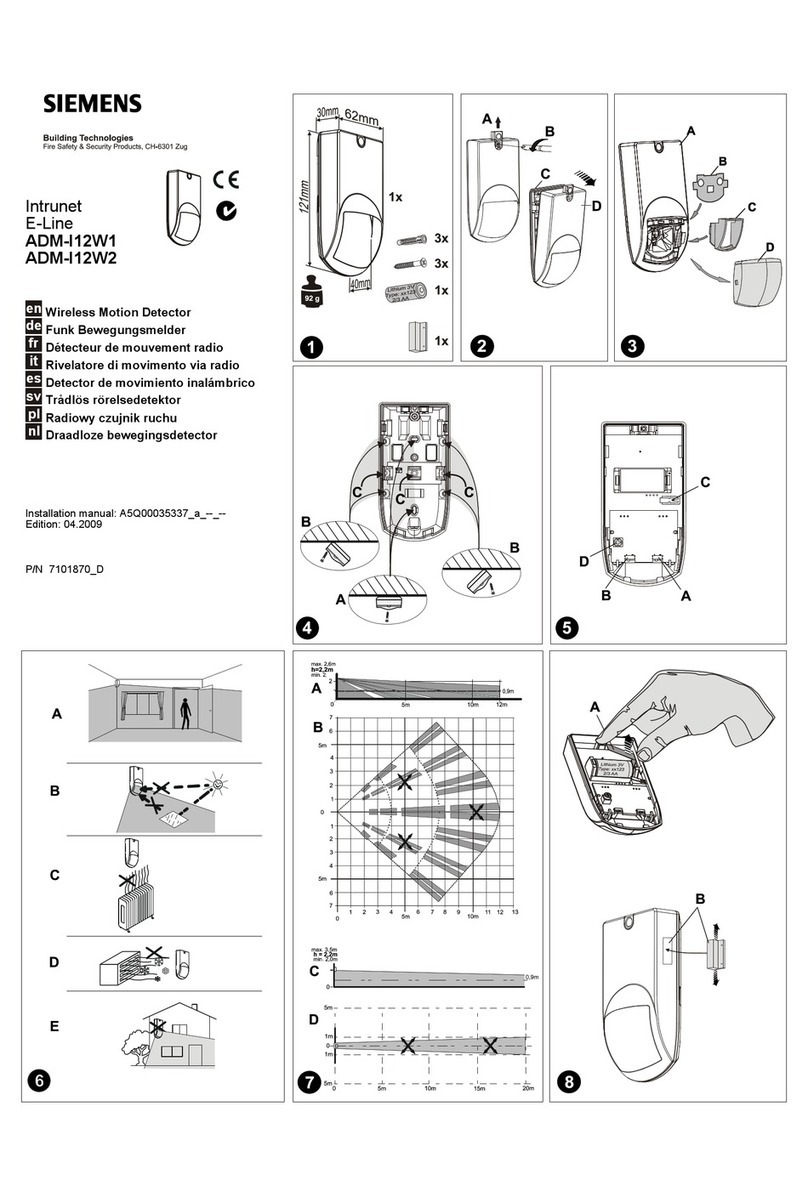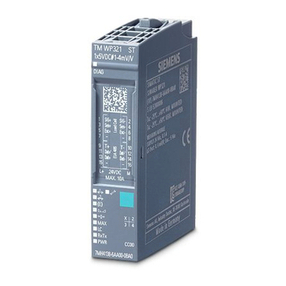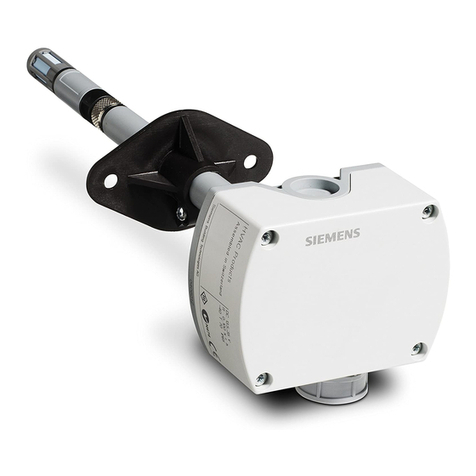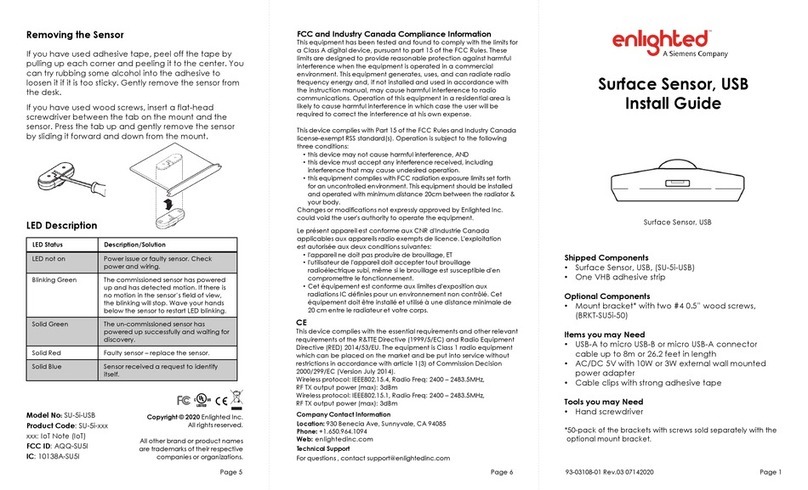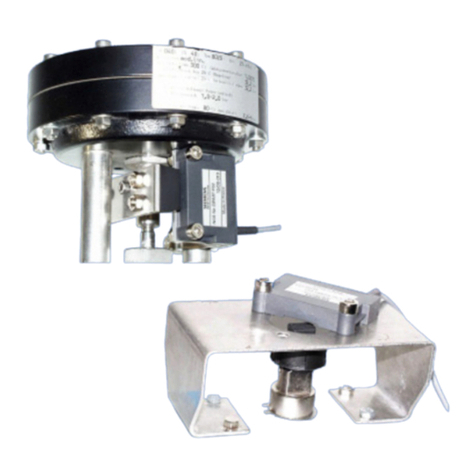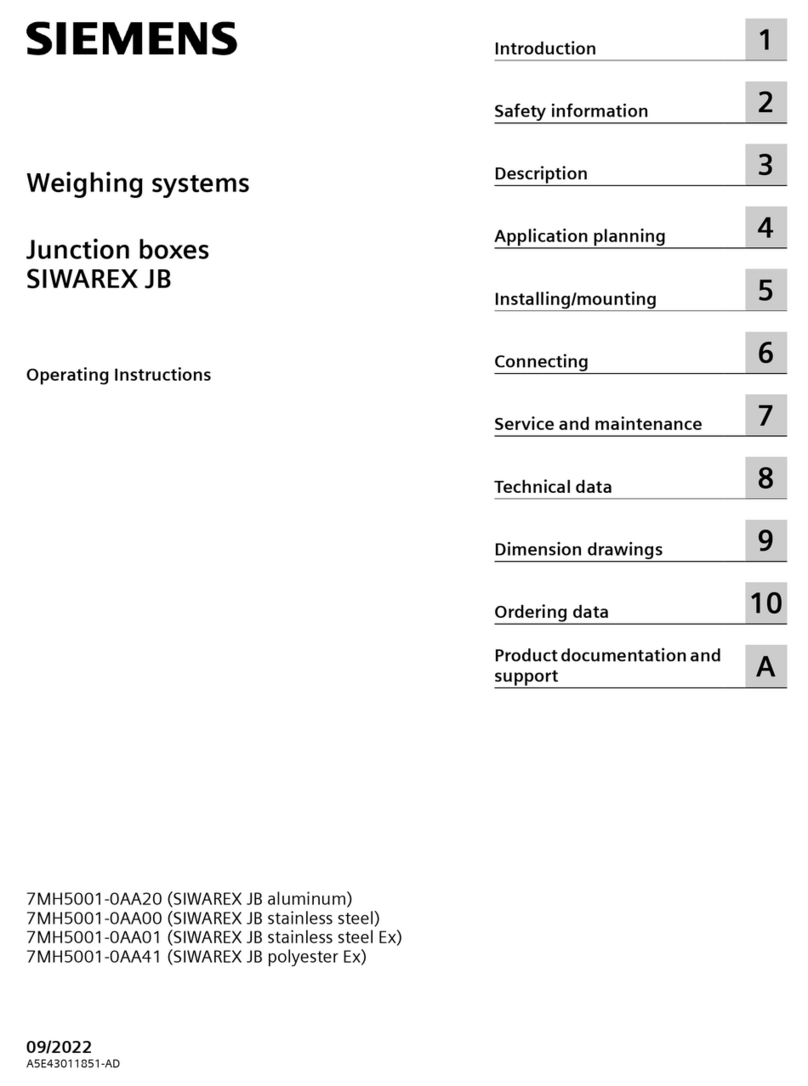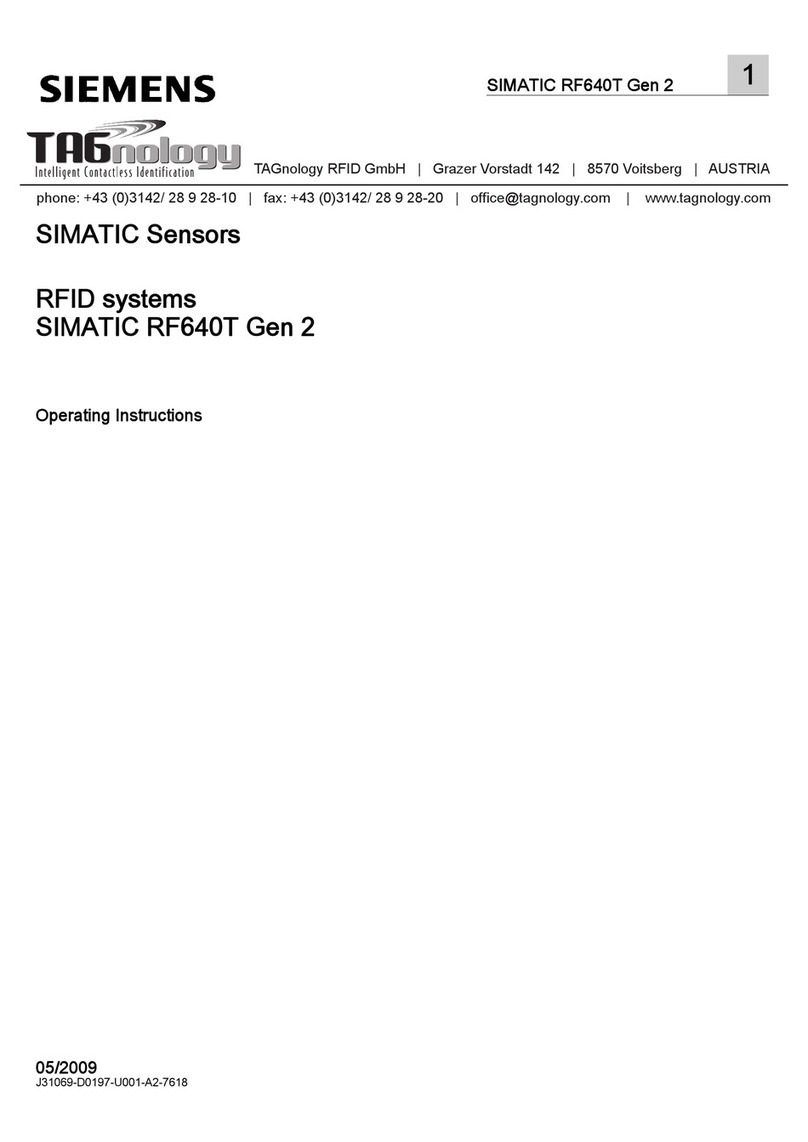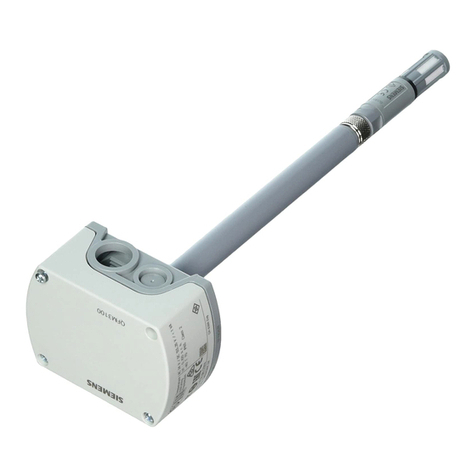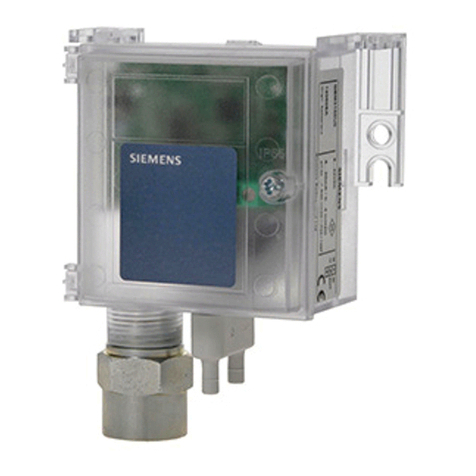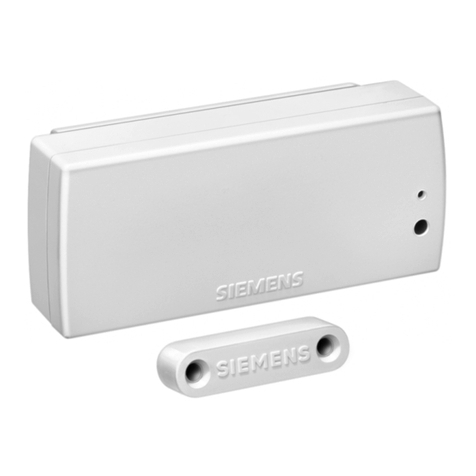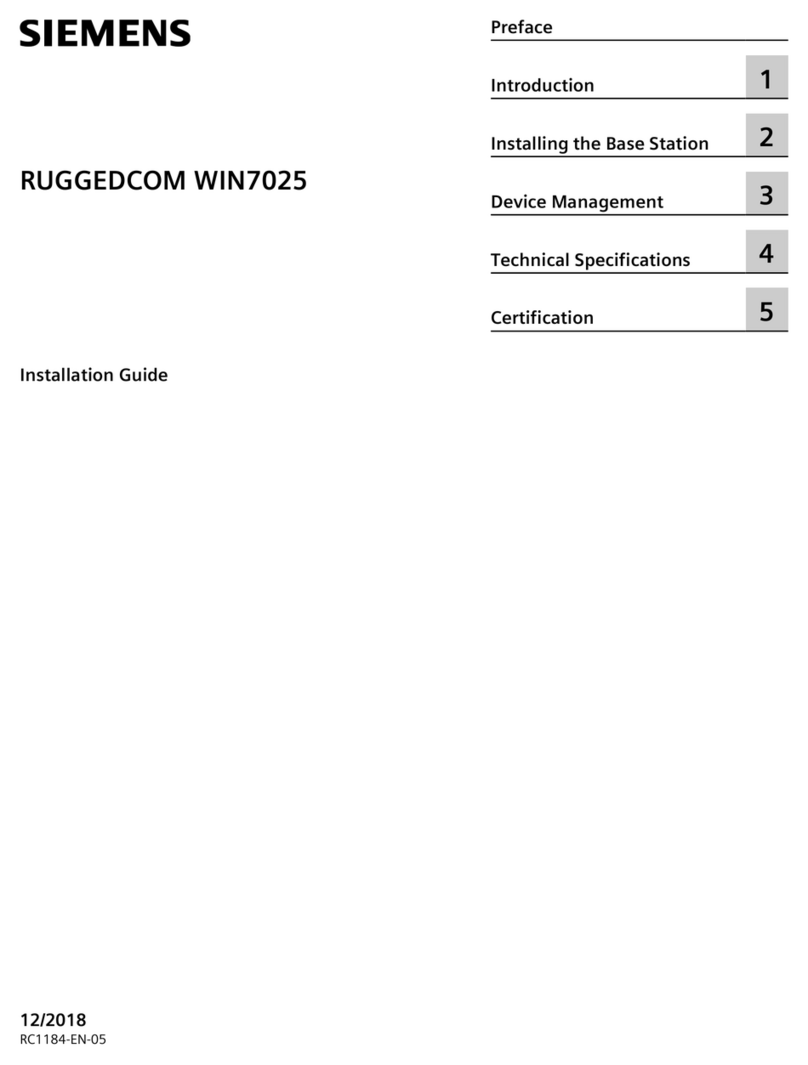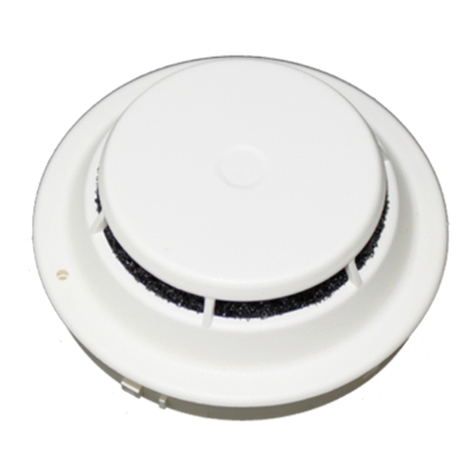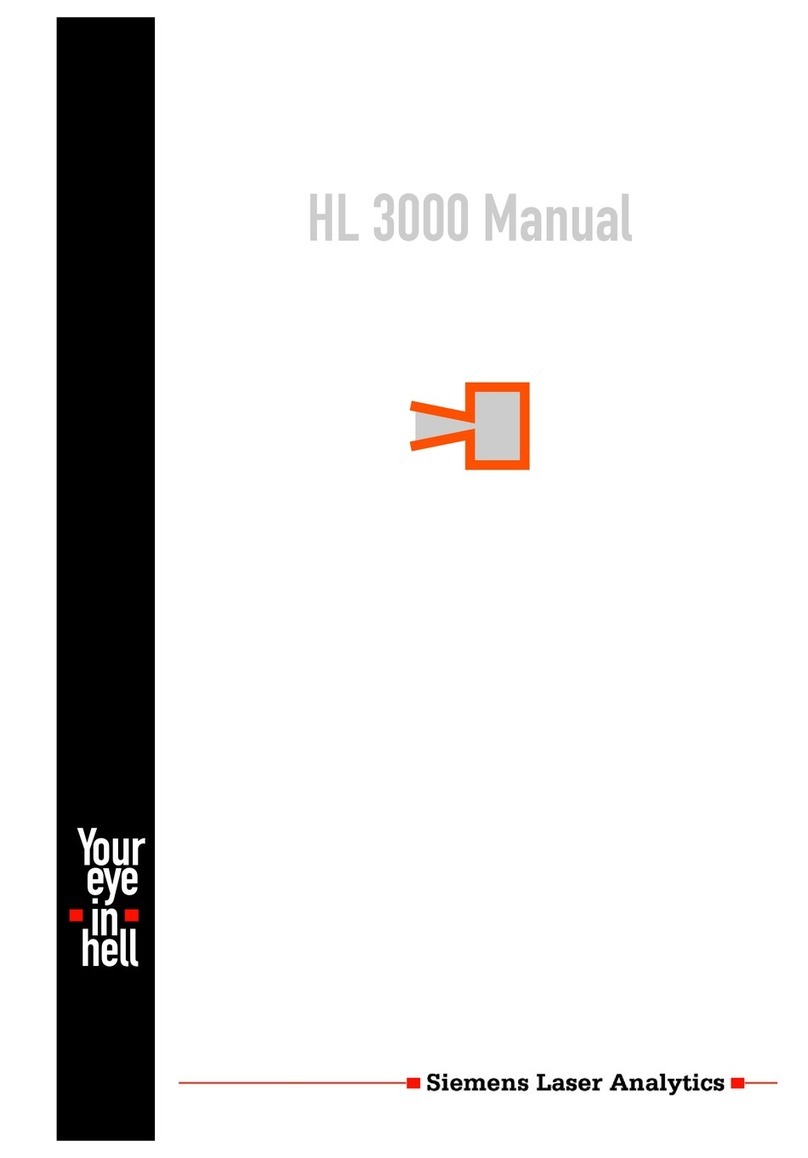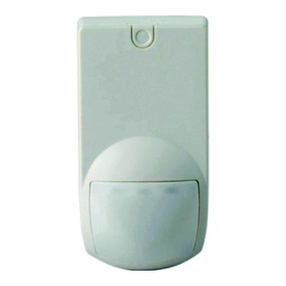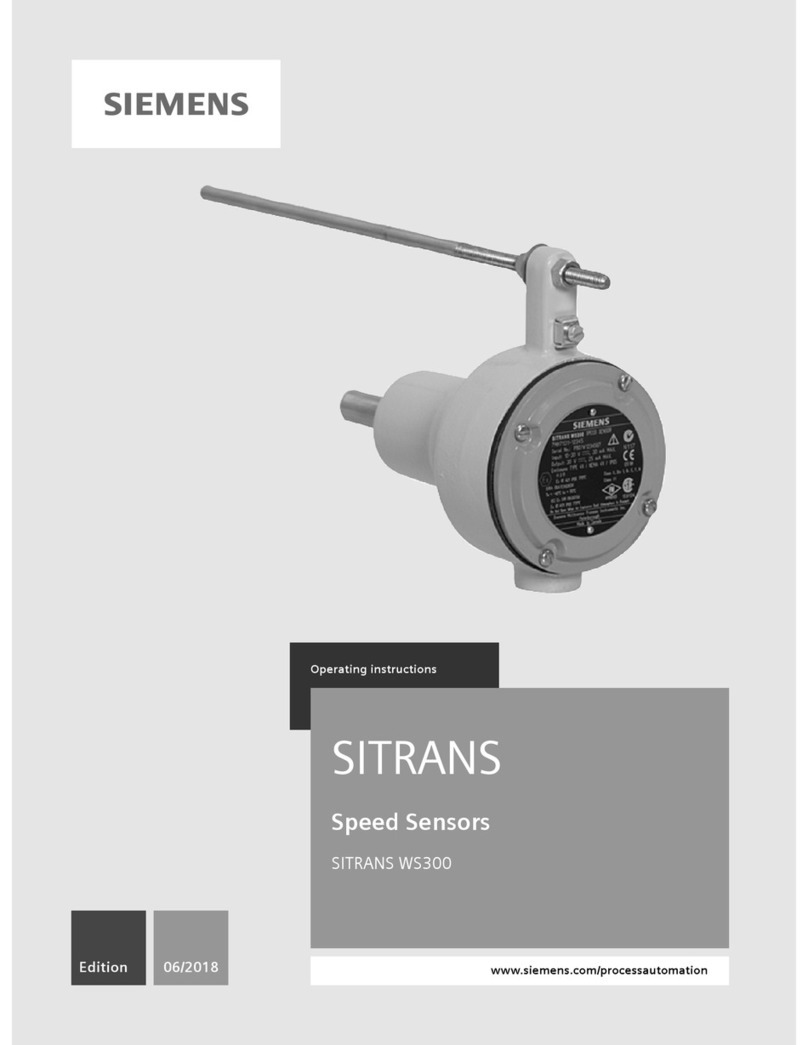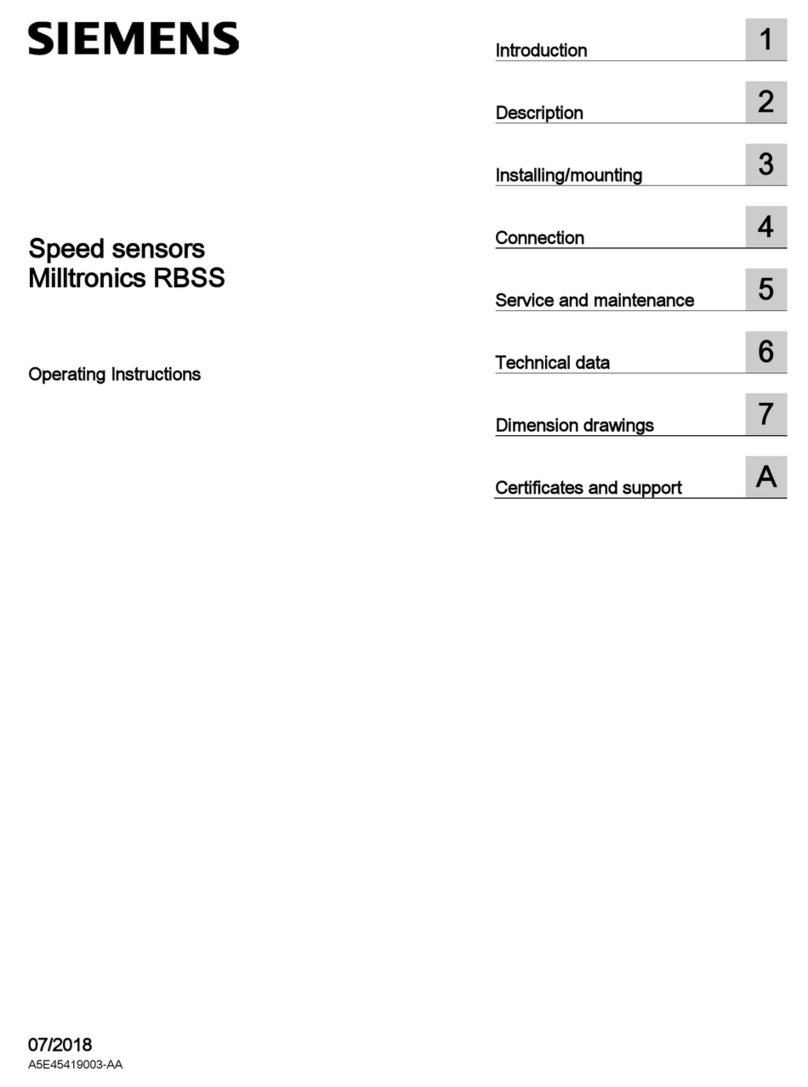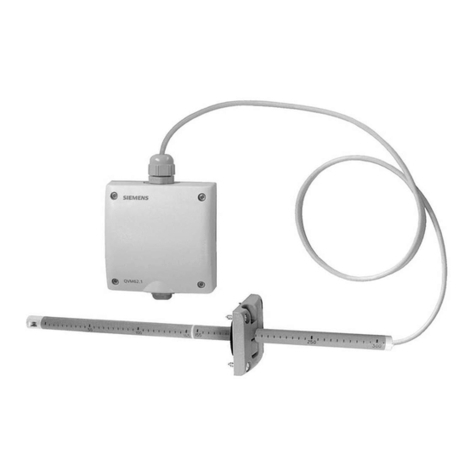
Gamma instabus
AP 257/41 Windsensor
AP 257/41 Wind sensor
5WG1 257-3AB41
Bedien- und Montageanleitung
Operating and Mounting Instructions
Stand: Februar 2008
As at: February 2008
Bild / Figure 1
Bild / Figure 2
Bild / Figure 3
Bild / Figure 4
Bild / Figure 5
D
Produkt- und Funktionsbeschreibung
Der Windsensor AP 257/41 (siehe Bild 1) enthält in einem kom-
pakten Gehäuse den Sensor, die Auswerte-Elektronik und die
Bus-Ankopplung.
Die Windgeschwindigkeit kann im EIS5-Format über den Bus ge-
sendet und auf bis zu 3 Grenzwerte überwacht werden. Grenz-
werte können als Parameter oder als Kommunikationsobjekte
gewählt werden. Außerdem kann die max. Windgeschwindig-
keit ermittelt, gespeichert, abgefragt und zurückgesetzt wer-
den.
Zusätzlich stehen 8 UND-Gatter und 8 ODER-Gatter mit je 4 Ein-
gängen für logische Verknüpfungen zur Verfügung. Wird die
Windgeschwindigkeit an mehreren Stellen / Fassaden gemes-
sen, so können die Logikgatter z.B. genutzt werden, um die
Windalarme mehrerer Windsensoren zu einem Gesamtalarm zu
verknüpfen.
Zur Parametrierung sollte die Engineering Tool Software ETS3
verwendet werden, da bei ihr die Einstellungs-Menüs des Wind-
sensors grafisch optimal dargestellt werden.
Die Spannungsversorgung der Windsensor-Elektronik erfolgt
über AC 20 V oder DC 24 V Sicherheits-Kleinspannung (SELV).
Zur Übertragung dieser Spannung kann das weiß/gelbe Ader-
paar der Busleitung genutzt werden.
Weitere Informationen
http://www.siemens.de/gamma
Technische Daten
Sensorik
•Windsensor: Messbereich: 0 ... 70 m/s,
Auflösung: < 10% des Messbereichs
Spannungsversorgung
•Busspannung: erfolgt über die Buslinie
•Busstrom: 9 mA
•Sensor-Elektronik: AC 20 V +10%, 50/60 Hz oder
DC 24 V + 10%, max. 110 mA, Restwelligkeit < 10%,
max. zulässige Leitungslänge 100 m
•Leistungsaufnahme: bei AC 20 V: max. 2,2 VA,
bei DC 24 V: max. 2,64 W
Anschlüsse
•Spannungsversorgung: Steckklemmen für Massivleiter oder
feindrähtige Leiter 0,5 ... 1,5mm²
•Busleitung: Busklemme schraubenlos,
0,6... 0,8 mm ∅eindrähtig, Abisolierlänge 5 mm.
Mechanische Daten
Abmessungen: ca. 118 mm x 96 mm x 77 mm (L x B x H)
Gewicht: ca. 145 g
Elektrische Sicherheit
Schutzart (nach EN 60529): IP44
Umweltbedingungen
•Umgebungstemperatur im Betrieb: - 30 ... + 50 °C
•Lagertemperatur: - 20 ... + 70 °C
•rel. Feuchte (nicht kondensierend): 5 ... 93 %
Prüfzeichen
KNX EIB
Lage und Funktion der Anzeige- und Bedienelemente
siehe Bild 2
1 Steckplatz für Kabelverbindung zum Gehäusedeckel
2 Steckklemme für Spannungsversorgung AC 20 V / DC 24 V
3 Öffnung für Kabel Spannungsversorgung
4 Öffnung für Busleitung
5 Steckplatz für Busklemme
6 Inbetriebnahme-Taste
7 Inbetriebnahme-LED
Montage und Verdrahtung
Standort
Wählen Sie eine Montageposition am Gebäude, wo der Wind
ungehindert vom Sensor erfasst werden kann. Unter dem Wind-
sensor muss mindestens 60 cm Freiraum belassen werden, um
eine korrekte Windmessung zu ermöglichen und bei Schneefall
ein Einschneien zu verhindern.
Der Windsensor muss an einem Mast oder einer senkrechten
Wand montiert (siehe Bild 3) und in der Querrichtung horizontal
(waagrecht) ausgerichtet werden (siehe Bild 4).
Montage
Der mitgelieferte kombinierte Wand- / Masthalter ist bei Liefe-
rung an der Gehäuserückseite befestigt.
Zum Entfernen verwenden Sie bitte einen Schraubendreher und
lösen Sie den Halter rechts und links wie in Bild 5 und 6 gezeigt.
Schieben Sie den Halter nach unten heraus.
Wandmontage:
Befestigen Sie den Halter senkrecht mit der ebenen Seite zur
Wand, den halbmondförmigen Steg nach oben (siehe Bild 7).
Mastmontage:
Befestigen Sie den Halter mit der geschwungenen Seite zum
Mast, Steg nach unten (siehe Bild 8).
Ansicht der Rückwand und Bohrplan:
Abmessungen der Gehäuserückseite mit Halter: siehe Bild 9,
Bohrplan: siehe Bild 10.
Seite 1 von 2
GB
Product and Applications Description
The wind sensor AP 257/41 (see figure 1) contains the sensor
and the electronic systems for wind data analysis and bus inter-
facing in one compact enclosure.
The wind speed can be sent to the bus in the EIS5 format and
monitored respectively for up to 3 limit values. Limit values can
be selected as parameters or as communication objects. Addi-
tionally the maximum wind speed can be recorded, stored, re-
quested and reset.
In addition, 8 AND-gates and 8 OR-gates are available with 4 in-
puts each for logical combinations. If the wind speed is meas-
ured in different locations / façades the logic gates may be used
e.g. for the logical combination of the wind alarms from several
wind sensors to an over-all alarm.
For configuration, the engineering tool software ETS3 should be
used, since it presents a graphically optimal display of the set-
ting menus of the wind sensor.
The voltage supply of the sensor electronics takes place via AC
20 V or DC 24 V safety extra-low voltage (SELV). For the trans-
mission of this voltage, the white / yellow twisted pair of the
bus cable can be used.
Additional Information
http://www.siemens.com/gamma
Technical Specifications
Sensors
•Wind sensor: Measuring range: 0 ... 70 m/s,
Resolution: < 10% of the measuring range
Voltage supply
•Bus voltage: via the bus line
•Bus current: 9 mA
•Sensor electronics: AC 20 V +10%, 50/60 Hz or
DC 24 V + 10%, max. 110 mA, residual ripple < 10%,
max. permissible cable length 100 m
•Power consumption: at AC 20 V: max. 2.2 VA,
at DC 24 V: max. 2.64 W
Connections
•Voltage supply: plug terminals for solid conductors or finely
stranded conductors 0.5 ... 1.5mm²
•Bus connection: screwless bus terminal,
0.6... 0.8 mm ∅single-wire, insulation strip length 5 mm.
Mechanical data
Dimensions: approx. 118 mm x 96 mm x 77 mm (L x W x H)
Weight: approx. 145 g
Electric safety
Protection type (according to EN 60529): IP44
Environmental conditions
•Ambient temperature during operation: - 30 ... + 50 °C
•Storage temperature: - 20 ... + 70 °C
•rel. humidity (not condensing): 5 ... 93 %
Markings
KNX EIB
Location and Function of the Display and Operating Elements
see figure 2
1 Slot for cable connection to the lid of the enclosure
2 Plug terminal for voltage supply AC 20 V / DC 24 V
3 Opening for voltage supply cable
4 Opening for bus cable
5 Slot for bus terminal
6 Commissioning button
7 Commissioning LED
Mounting and wiring
Location
Select a position on the building where the wind can be re-
corded by the sensor without impairment. There must be at
least 60 cm free space under the wind sensor to allow for cor-
rect wind measurements and to prevent the sensor being
snowed in case of snow.
The wind sensor must be mounted on a mast or a vertical wall
(see fig. 3) and be aligned horizontally across (see fig. 4).
Mounting
The supplied combined wall / mast holder is fixed at the rear of
the enclosure on delivery.
To remove it, please use a screwdriver and remove the holder
on the right and the left, as shown in figs. 5 and 6. Slide the
holder out towards the bottom.
Mounting on a wall:
Fasten the holder vertically with the even side to the wall, with
the crescent-shaped bar to the top (see fig. 7).
Mounting on a mast / pole:
Fasten the holder vertically with the curved side to the mast /
pole and the bar to the bottom (see fig. 8).
View of the rear wall and drilling scheme:
Dimensioning of the rear of the enclosure with holder:
see fig. 9, Drilling scheme: see fig. 10.
Page 1 of 2
A5E02038571A DS03
